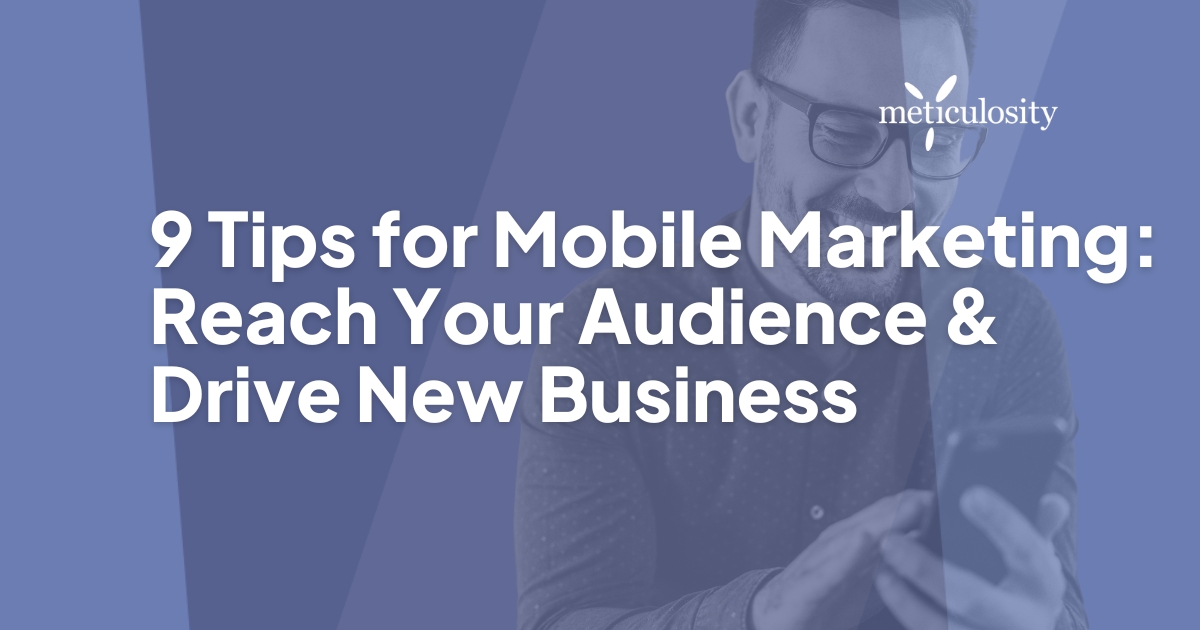What is Mobile Marketing?
Mobile marketing is a digital marketing strategy focused on engaging a target audience via mobile smartphones, tablets, and other handheld devices. Typically, marketers will engage through apps, social media, mobile ads, SMS, MMS, and email. Mobile marketing has become the primary way for brands to interact with mobile-savvy consumers.
1. The Mobile Consumer is Invested
If they are using your app, then they are already mobile customers. They are much more likely to understand your offering, have experience with it, and provide candid feedback. Logically, if your mobile focus group comprises customers using the same application, you can infer that they represent the overall population.
2. They Are More Active
Customers are spending more time on mobile apps, as opposed to behind a desktop computer, than ever before. We’ve all stood in line at the grocery store or bank and browsed through apps while waiting.
If you send a survey or request for feedback accessible on the mobile app, you are much more likely to get a response than if a customer has to sit down at their computer, log in, and complete the entire survey at a desk.
Learn how Google Mobile's first indexing can help your mobile marketing campaign.
3. They Are Open Books
Data analysis lets you see how long a mobile customer has been using your app, how frequently they use it, which pages they spend the most time on, past purchases, and much more.
If you are looking for the right focus group data to help build a specific campaign, your mobile app can paint an accurate picture of user behavior and help you target the right focus group members.
4. You Can Segment Your Audience
Collecting sentiment data is an easy way to gauge the temperature of your customer base. Include a quick (one click, if possible) way for your mobile customers to tell you if they are happy, neutral, or unhappy with your products or services.
If you collect this sentiment data, or Net Promoter Score, or any other customer satisfaction metrics, you can easily organize your mobile users into distinct focus groups: those who love your offering, those who are ambivalent, and those who are detractors.
Craft your survey and feedback requests for each specific group. What do the promoters love about your business? What do the detractors hate? How can you turn a lukewarm customer into a raving fan?

5. Get Data Quickly
Instead of waiting for responses to trickle in from an email survey, use your mobile app to request immediate feedback after a triggering event or when planning a campaign's direction.
Ask your customers to weigh in while their experience is fresh and top of mind. Use mobile data as a fast vehicle for the right information to help plan budgets, mobile marketing expenses, and overall business strategy.
6. Perfect the Process
After you’ve collected feedback from several subsets of your customer population, refine your collection methods and the questions you ask to create best practices that work for you. It isn’t one-size-fits-all.
Pay attention to the best times to ask questions.
- When do you get the highest response rates?
- Which search terms are customers using?
Form a hypothesis about expected results and compare actual results to better understand customer needs. Remember to follow up with your audience via email to inform them that their responses are valuable. Inform them how their feedback directly impacts your business operations and provides a better customer experience.
7. A Mobile Driven World
Hootsuite’s global digital report reveals that there are 4.91 billion unique mobile users in the world and that mobile browsing currently takes up half of the world’s Web traffic. In fact, new data from comScore shares that mobile has overtaken desktop as a touch point.
This is not to say that you should abandon all strategies relevant to desktop users. Desktop still has a place in Web marketing, except that mobile use has become so influential that it’s looking like your future SEO needs to cater to hands-free usage.
.jpg?width=663&height=398&name=Efficiency%20Gains%20How%20AI%20Streamlines%20Content%20Production%20(2).jpg)
8. Optimizing for Mobile
Mobile optimization is a substantial way to get top ranking. This entails knowing new SEO rules to maximize results.
We know that having a responsive website is no longer enough. With Google’s mobile algorithm update, your website also needs to eliminate intrusive pop-ups, or “interstitials,” because they will not help you rank. The search engine is steadily refining user experience, and some mobile pop-ups do get annoying.
Google clarifies that you don’t have to take out all pop-ups. Just remove the ones that interfere with your user’s experience.
9. Voice Search & Your Keywords
Mobile growth also brings with it a critical change in search. An increasing number of people use voice search instead of type search. Voice search is convenient because it allows people to multitask, for example, search for a recipe while preparing the kitchen.
Developers are making big improvements to artificial technology, creating better digital assistants that almost let you have virtual conversations with your device. And these “conversations” reveal that your keywords need to contain natural language. You should also consider long-tail keywords.
Over to you
With some practice and fine-tuning, your mobile customer base can arm you with the information you need to directly impact your business. Follow proven best practices, continue to refine your feedback process, and treat your customers like trusted advisors when they take the time to talk to you. The results will speak for themselves.








